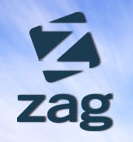Zag steers new route to buying a car


On the other hand, while I don't know anything about driving a car, I do know something about the impact of transparency and online sales on marketplaces. I was on the advisory board of Orbitz until its acquisition by Cendant, and saw the delicate dances among the online services, the travel agents and the airlines.
All that probably makes me uniquely qualified to appreciate Zag.com, The first generation of car sites offered information – pricing transparency. Zag goes one step further and offers process – managing the workflow of buying a car and handling the related tasks of getting a loan and buying insurance. the latest run at making auto-buying more efficient, from Scott Painter, the man who founded CarsDirect.com in the ‘90s. Painter helped create the current environment of increasingly transparent car prices, with some help from Kelly Blue Book and Edmunds. And now, with Zag.com, he’s leading the Internet trend from cost-per-click (or lead) to cost-per-transaction.
Of course, most of the news about the car industry right now is pension problems, production cuts by GM and Ford, rumors of bankruptcy (probably floated in order to get the unions to "cooperate"), and gas prices and mileage. The overall US auto business, about $700 billion per year for new ($500B) and used ($180B) cars, hasn’t grown more than a percent or two a year for 20 years.
But dealers and buyers are having their own challenges.
On one side, consumers know now a lot more about car pricing, but they don’t have the negotiating power they could get as members of a buying group. And they have to go through a cumbersome process to research cars and buy one. "The worst part," says Painter, "is that the majority of customers that use the Internet to get a price end up requesting a price quote which effectively means that they are sold to the dealer as a lead. The customer is right back where they started - dealing with a dealer and not being in control of a frustrating and complicated process."
As for dealers, it’s complicated. Right now, US dealers are part of an $8-billion service industry. They typically spend $500 per car sold to get a buyer. In the old days, most of that money went to advertising; now it goes to Internet leads (e-mails and phone numbers of prospective customers). That eats up an increasing share of a dealer’s profits. Although the dealers may hate the transparency brought by CarsDirect, Edmunds et al., they depend on them and other Net services for (increasingly devalued) leads.
Unfortunately, most of those leads are lookers, or they’re the same person over and over again. Only about 1 in 20 (or worse) leads turns into a buyer; the others don’t buy, or they buy from some other dealer. Meanwhile, overall sales volume is under pressure, especially for dealers unlucky enough to carry the "wrong" brands (mostly American) or the "wrong" vehicle types (mostly gas-guzzling).
Yet since the dawn of history, franchising laws have protected dealers from external competition, whether manufacturers themselves or non-club members such as CarsDirect. CarsDirect could show posted dealer prices, actual dealer prices, manufacturers’ suggested retail prices (MSRP) and even invoice prices (the actual prices dealers pay to manufacturers). But CarsDirect cannot sell a car except as a broker for a dealer.
Accordingly, Painter’s next company (after a few stabs at other activities), BuildToOrder, had to go far afield to find investors completely unaffiliated with any car-selling franchisor and bypass the entire US retail car market in order to sell cars direct. That venture was a stab at a Dell-like user-configured car company, but Painter folded it (honorably) in 2003; the timing was wrong.
Nonetheless, not even franchising laws can protect dealers from one another, and from the laws of economics. So Painter’s new company attempts to serve the dealers by lowering their costs, even as it erodes their power by performing more and more of their functions. In short, it’s an outsourcer to the dealers.
But it’s also serving the other side, working as an outsourcer. The difference from CarsDirect is not so much that Zag can sell cars (which it still does only as an agent), but that Zag works both with affinity groups and with dealers as an outsourcer. Instead of operating a decentralized marketplace, it’s trying to make both sides more efficient and drive costs - and revenues - down.
Zag has been operating this new model, on a limited basis, since May, operating the DriveOne site for Capital One. It also operates Autoland, the nation’s largest full-service auto-buying and brokering service for credit unions, and is shifting its model to Zag’s – with services to dealers as well as to the aggregated buying group. The company has raised about $40 million in debt and equity, and is in the middle of a follow-on equity financing. The company’s stated goal is to facilitate the sale of 250,000 cars per year and to direct 2.4 million buyers to dealers within five years. Last year, Autoland alone handled $300 million in auto sales for its members.
The basic idea is to bypass the increasingly inflated lead business – more and more leads for fewer and fewer actual buyers – and also the increasingly redundant dealer sales efforts. Instead of trying to generate leads, Zag teams up with its actual customers – mostly affiliation groups such as CapitalOne or AAA clubs – that represent large numbers of car buyers, and that have reliable, privacy-protected information about those buyers’ financial capabilities. CapitalOne represents 46 million credit card-holders; Zag’s other announced partners are 300 credit unions representing 8 million members and 12 AAA clubs with 6 million members. It is also in negotiations with a variety of (so far) non-car retailers, both online and offline, insurance and finance companies. (CapitalOne is an investor, along Centre Partners, GRP Partners, Anthem Venture Partners and Arcturus Capital.)
Zag serves as those groups’ car-buying service, enabling them to offer better terms, an easy, trusted buying process, and related finance and insurance offerings to their members.
At the other end, Zag teams up with the dealers, offering them actual buyers rather than leads, and offering an outsourced transaction management service to apply economies of scale and automation to the basic paperwork. All the dealer has to do is deliver the cars.
How will dealers react? Of course, Zag is taking away much of the value they bring to the party. But in a world where there are fewer and less profitable cars to sell, they have to consider the other half of Zag’s unrefusable offer: It is lowering their costs. By charging the dealers not for leads but for actual sales (about $250), Zag cuts their average marketing costs in half. And by handling the paperwork and eliminating the negotiation step by sending in the customer for a particular car at an agreed price, Zag also reduces the dealer’s staffing requirements. That might not please the staff (!), but it gives the dealer some hope of profitability. The alternative is to compete with dealers who do use Zag and who will enjoy its cost benefits.
Over time, I expect Zag and companies like it to shake up the auto market. Just like music publishers and travel agents, car dealers are a vestige of an old, full-service economy. While consumers (with justification) don’t want the transparency of car dealers knowing exactly what their car-buying intentions are, the presence of Zag and the affinity groups as intermediaries allows the creation of trust in both directions. The affinity groups bring real buyers to the dealers’ tables, and they also serve as advocates for their members in terms of pricing and convenience.
There’s only one question that still intrigues me: Why do American car buyers mostly hate to bargain, whereas people in so many cultures love to do so? I think it all comes down to transparency. In most cultures, negotiators flatter themselves that they are good negotiators and that they got the best deal. But once you have true pricing transparency, it’s almost impossible for most people to maintain that illusion. Americans would rather pay a fixed price and know exactly what they are paying for.